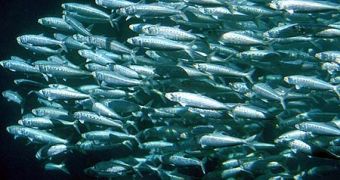Only yesterday, the journal Nature Photonics witnessed the publication of a new study stating that, because of the guanine crystals it contains, the skin of fish species such as sardines, herrings and sprat displays very specific optical properties which help keep these specimens out of harm's way.
The specialists who looked into this issue are pretty straightforward when explaining that, by bending the laws of physics, these fish are capable of concealing themselves from predators with maximum efficiency.
Thus, they become invisible to other species such as tuna and dolphins, which are known to feed on them on a regular basis.
The official website for the University of Bristol lets us in on all the science talk revolving this topic.
According to PhD student Tom Jordan, Professor Julian Partridge and Dr. Nicholas Roberts, three researchers working with the aforementioned university, reflective surfaces more often than not polarize light.
Whenever the laws of physics apply, polarized light translates into a drop in reflectivity.
However, the guanine crystals contained by the skin of said fish species make it fail in polarizing light, and therefore allow it to continue benefitting from high reflectivity.
As Dr. Nicholas Roberts puts it, "We believe these species of fish have evolved this particular multilayer structure to help conceal them from predators, such as dolphin and tuna."
"These fish have found a way to maximize their reflectivity over all angles they are viewed from. This helps the fish best match the light environment of the open ocean, making them less likely to be seen."
PhD student Tom Jordan goes on to explain that the findings of this research can help scientists develop more efficient LED light and optical fibers.
"Many modern day optical devices such as LED lights and low loss optical fibers use these non-polarizing types of reflectors to improve efficiency. However, these man-made reflectors currently require the use of material with specific optical properties that are not always ideal."
Because of this, "The mechanism that has evolved in fish overcomes this current design limitation and provides a new way to manufacture these non-polarizing reflectors," Tom Jordan believes.

 14 DAY TRIAL //
14 DAY TRIAL //